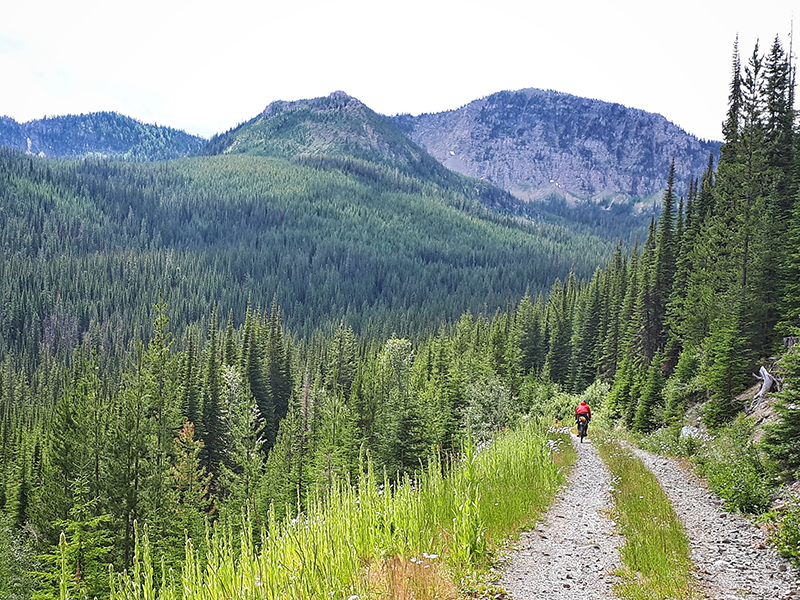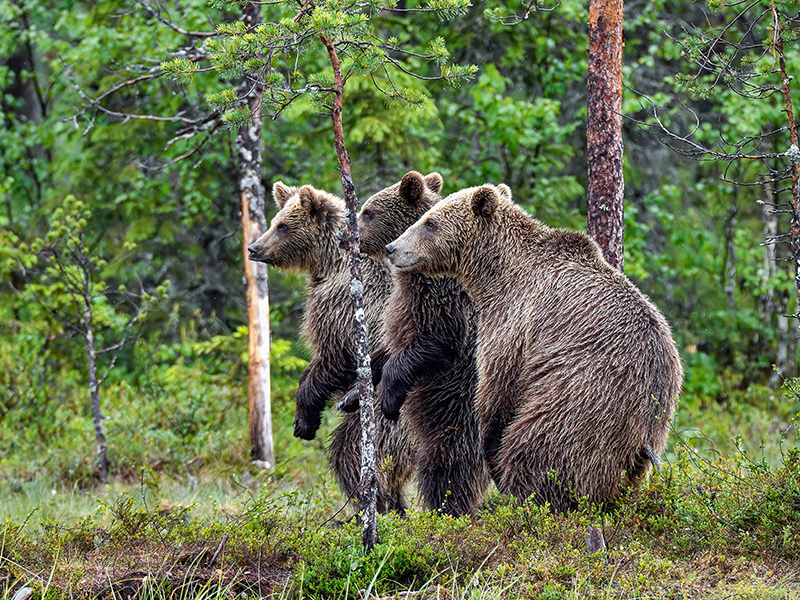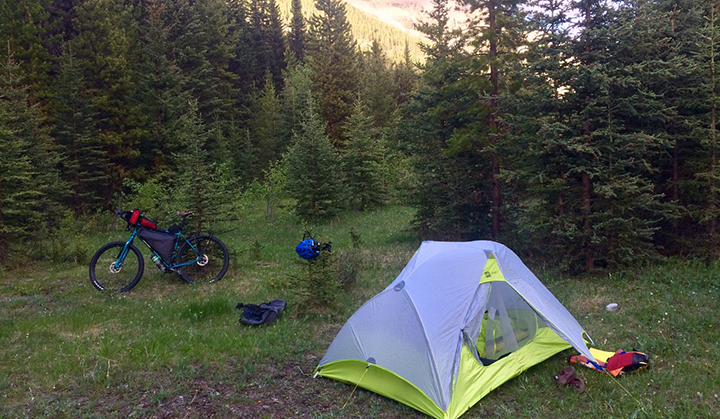Best practices while random camping to keep you and wildlife safe, and ensure wild places stay healthy for years to come

Tim Johnson is Y2Y’s Alberta program associate, and as an avid backcountry biker and outdoor enthusiast, is well-versed in random camping.
In this guest post, Tim shares his experience, tips and best practices for a good experience out in the wilderness, while reducing impact on lands, waters, and wildlife across the Yellowstone to Yukon region.
It was nearly 10 p.m. when the late June sun finally dipped behind the tall spruce trees framing the deserted gravel road I had been biking down for the past few hours. My ambition of reaching a campground in Elkford, B.C. — a further 40 kilometers down the road, and no doubt full on this weekend evening — was dwindling fast as darkness descended on day three of my backcountry bike trip.
A quick glance at a map confirmed my hopes: I was still on Crown land, and coming up to what appeared to be a meadow next to the Elk River, where I could ‘random camp.’
Fifteen minutes later, I was off my bike and setting up my tent in a grove of conifers. Ten minutes after that I was enjoying a quick dinner, the quiet rush of the river and a few mosquitoes keeping me company, before collapsing into my tent.

Wild camping in the Yellowstone to Yukon region
Random, wild or dispersed camping are common terms for the increasingly popular style of camping at undesignated and unserviced backcountry spots. This was especially true during the pandemic, when parks and campgrounds saw record-breaking numbers of visitors.
Whether you are pedaling into the backcountry as a solo cyclist or towing a trailer into the mountains with your family, finding quiet places to reconnect with nature, get out on trails and enjoy evenings around a campfire is a huge draw for many.
Aside from being a lower-cost alternative to formal campsites, random camping — usually on Crown (Canada), or U.S. state or federal land — offers increased flexibility to take a last-minute trip and find to spots to camp with more seclusion and solitude. However, the growth in random camping also means increased pressures on the lands, waters and wildlife throughout the Yellowstone to Yukon region.
It’s important to keep a few things in mind before heading out to find your perfectly secluded (and ideally mosquito-free) streamside site.
Know before you go
The patchwork of land designations within the Yellowstone to Yukon region means there are numerous areas to random camp; but it’s essential to know in advance what rules exist where you plan to go. To help plan your trip, do a quick Google search in advance to access the abundance of online resources, including government websites, that are dedicated to just that.
Limit your footprint
It’s important to respect private property and heed any signage you may encounter out on the landscape. In certain regions you may find low-cost or free camping sites, such as B.C.’s ‘Recreation Sites’, that have an existing footprint on the land and possibly some limited amenities like an outhouse and fire pit. Where possible, avoid creating new camp sites when random camping. We’ve included a few links at the end of this post to help with that.
Be wilderness-prepared!
Random camping requires a commitment to complete self-sufficiency. Exact conditions will depend on where you’re camping, but there are a few universal truths to the experience:
- Bring your own potable water, or the means to treat natural sources — and don’t expect a shower or flush toilet.
- Be prepared to properly dispose of waste, which includes packing out anything that isn’t, ahem, produced by your body!
- Expect no garbage facilities, picnic tables, fire rings, or cell service.
- Manage wildlife attractants (a.k.a. anything with an odor) by securing your food and garbage out of a curious bear’s reach, and packing food scraps out with you.
Leave No Trace
The seven principles from the folks at the Leave No Trace Centre for Outdoor Ethics are essential reading that can apply to any type of outdoor recreation, and essential when random camping. Widely considered the gold standard of best practices for minimizing the impact of our outdoor recreation, following these principles is important not only to our experience of time spent outdoors, but also to the health of the landscape and wildlife throughout public lands in this amazing region and beyond.

Up early the next day, I was well-rested and ready to keep pedaling through the mountains — but not before a coffee and a bowl of oatmeal while sitting on the banks of the Elk River.
In the daylight, there were a few signs of past campers — an old fire ring, and some spots that had been cleared for a larger tent — but I was happy to see that most had followed the ‘pack it in, pack it out’ and ‘leave it better than you found it’ principles that keep sites like this accessible.
I loaded up my bike and rode off, already thinking about where I might find my next random camping spot on the route ahead.
Learn more about random camping
Dispersed camping in the United States
In the United States, lands managed by the Bureau of Land Management and National Forests offer options for ‘dispersed’ (the common U.S. term) camping. The Recreation.gov website is also a helpful resource.
Crown land camping in Canada
If you plan on random camping on Crown land, get to know the rules and regulations for Alberta and British Columbia.


